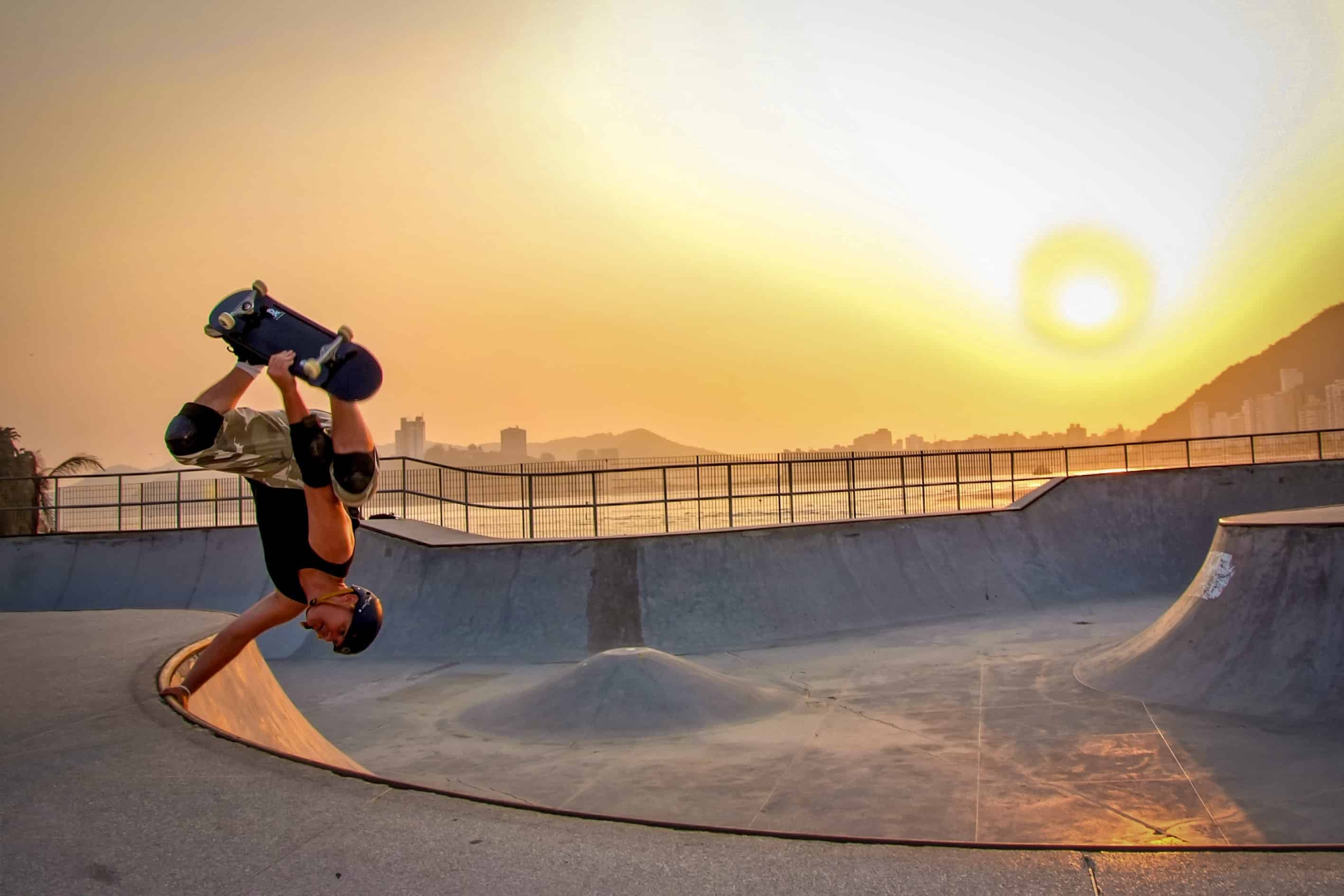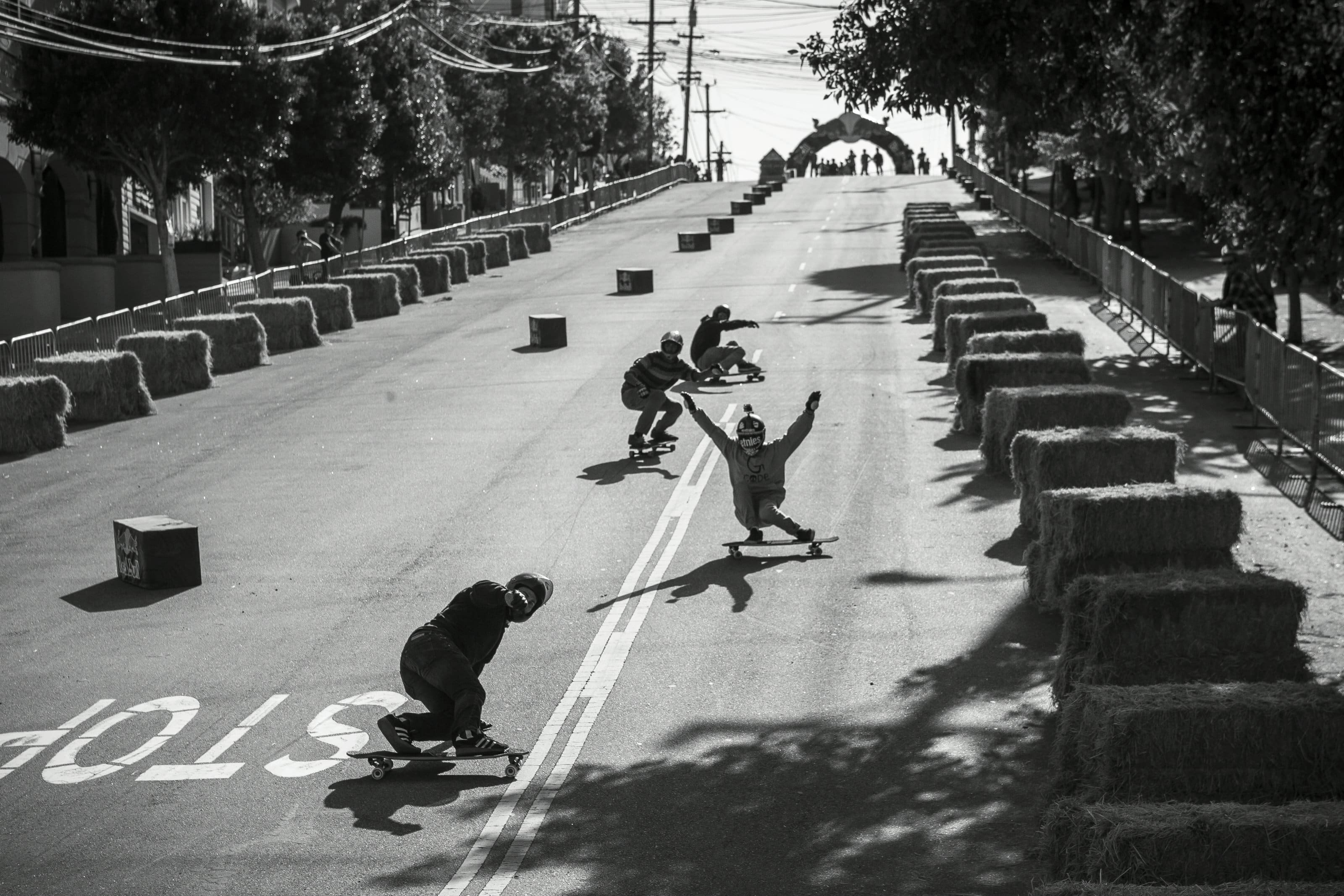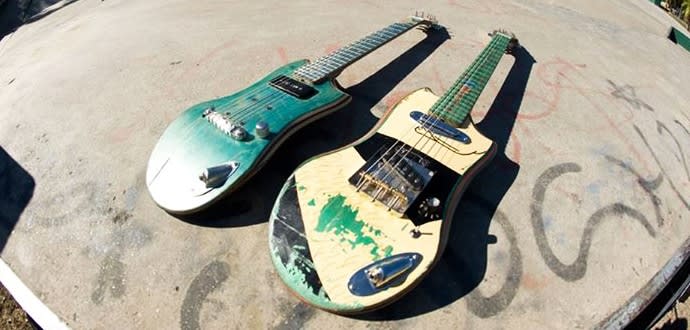Skateboarding 101 – the answers to those questions you’re too afraid to ask!

A cultural movement that extends around the globe – learn about its humble beginnings, bright future and how it’s shaking off its bad-boy rep… and start by repeating with us, SKATE IS NOT A DIRTY WORD.
The History of Skating
A recreational sport with an artistic side first popularized in the 30s, what started as a style of soapbox racing soon transformed into the wooden plank and four wheels we know today. Roll surfing as it was first coined in 50s California by a collective of SoCal surfers looking to take their favorite sport onto solid ground, saw the start of the revolution, and by 1973 the first plastic urethane wheels had been invented to enhance speed, traction and improve handling. A progression built on boredom and deprivation; the 1976 drought gave birth to the bowl – with many houses abandoned and swimming pools dry, hobbyists found new ways to amuse themselves in the suburban wastelands – a trend in the making.
With the sport’s foundations firmly planted, iconic tricks like the Ollie became the new frontier for early adopters – with the 80s and 90s fondly seen as the golden era when skate finally went global. Born at the beach but bred in the streets, the community-driven and grassroots sport became a vehicle for teenage expression – formed in the same youth landscape as fashion, music, video games and cinema. Today, skate has become a rite of passage around the world, for all walks of life and big kids of every age!
Different Variations
– Slalom : Considered the oldest form of skating first documented in the 60s, this sporty variation borrows from traditional slalom rules – showcasing agility and board control as riders navigate obstacles on a road course. The first boards where short, boxy and plastic but today they have become longer and thinner to reduce drag.
– Freestyle : The most common form of street skating that uses the urban environment (kerbsides, stair sets, walls, benches etc.) and purpose-built parks (ramps, rails, boxes etc.) bowl riding also falls into this category – including the rarer mega ramp riding (4m) renowned for high airs and bone-crunching falls – see Tony Hawk and Bob Burnquist. Since the 90s, flat skate (floor-based tricks) has become less popular…
– Longboard downhill : An extreme variation made for the brave, downhill boarding takes place on scenic mountain roads with crazy hairpin bends and narrow passes. If you don’t mind breaking your fall at 100 km / h on the harsh tarmac – or dodging incoming traffic, then give it a go! Surprisingly, accidents are rare, but this dangerous downhill sport is reserved for experienced skaters only – which might account for those low stats. If you’re wondering, ‘how do you break?’ well, the answer is simple – you don’t. Instead, use your board to slide towards the nearest grassy knoll (and cross your fingers that you don’t end up breaking with your face!)

– Carving : Inspired by the original Californian slide tribe that took the sport to the streets, carving takes its principles from surfing – using the body to pump the board and build speed. Using bigger wheels, ‘surf skate’ replicates the technique of surfing for a wave-like feel.
– Dancing : Inspired by longboarding, dancing uses an elongated skateboard whereby riders ‘dance’ up and down the board to flaunt their balance. Also called sidewalking, the variant continues to grow with longer and more flexible boards allowing people to try more and more amazing tricks.
– Cruising : Making a huge comeback since the 60s when it was first invented, these old-school skateboards are a great way of getting around and are the most affordable type of deck, too. A SoCal sport popularized around the world, the board’s lightweight, cheap and small features make it ideal for inner city use and can be stashed away easily.
– Others : electric skateboarding, mountain-boarding, snake-boarding… the list is endless! There a range of hybrid boards out there that expand on the original form and function of a classic wooden deck and four wheels – it’s a brave new world…
Most Famous Skate Spots
Since things kicked off over 50 years ago, skateboarding has gone worldwide – with skaters found in all types of urban settings from the street to the shore. Thanks to the sport’s cleaner image, skate parks have become part of the urban landscape, with design-led innovation giving birth to a legacy of different landscapes over the last 15 years.
Across Europe, skate parks and urban settings have taken on iconic status. From the infamous Southbank Center in London to Trocadéro in Paris, our capital cities are stacked with great spots. In France, the southern city of Bordeaux is nicknamed ‘the city of skateboarding’ thanks to its multitude of outdoor skateparks, unique urban planning and newly created Darwin Ecosystem indoor park. To witness the best longboard dancing, head to Dock Session in Paris and for those of you with nothing to lose, travel to Col de l’Espigoulier near Marseille for serious downhill action – or check out the bowl at Prado for something different.
Next time you’re in South Africa, don’t forget to check out Indigo Skate Camp in the Valley of 1000 Hills – one hour from Durban. Located in a rural town called Isithumba, Zulu locals have crowd-funded an epic big ramp and wild skate park. When in India, explore Madhya Pradesh and the small village of Janwaar that’s at the heart of a social activism project called Castle Skate Park and in the USA Woodward Camp is where it’s at if you’re looking to get started or work on your technique.
Pro Tips for Beginners
Skateboarding clubs offer lessons for mini ramp riders starting from 4 years old. The goal is to improve your balance and natural reflexes – and while you’re working on that, make sure you kit up with a good helmet – plus knee, elbow and wrist support as falling is a big part of building up your confidence.
Find a board that’s right for your height, shoe size and frame to ensure you feel comfortable with the basics. If you don’t surf or skateboard, you’ll have to determine whether you’re goofy or regular (dominant / lead foot first) as this will affect your trucks and help to improve balance on the board – ensuring better control and confidence in your equipment. Our advice? Start small, master the basics – then take on the big ramp!
Legendary Skaters
A community run and operated sport built from the ground up, on the skateboarding wall of fame, there are some names that pretty much made skate the sport it is today. One film that’s been on repeat since the 70s is Lords of Dogtown – the story of the Z-Boys chronicled by Stacy Peralta, Tony Alva and Jay Adams. The most famous skateboarder of all time has to be Tony Hawk. Part of the Bone Brigade, his epic 900 ° spin has become the half pipe holy grail. Another American known as the father of modern freestyle is Rodney Mullen – and pioneer of pretty much the best tricks ever created.
The man who invented the Half Cab, Steve Caballero’s moniker fakie backside 180 ollie move made history – whilst the Brazilian-born Bob Burnquist is considered the reigning king of Big Air at the X Games (he even dropped out of a helicopter once) and Danny Way took big air on an international scale when he ollied over the Great Wall of China in 2005.
But it’s not just about the boys, Brazilian Leticia Bufoni is the first woman to win three consecutive gold medals at the XGames in 2013 and is ranked as the most followed rider on Instagram. And if you’re a fan of old-school, don’t forget to check out our interview with Richie Jackson.
The list goes on… from Nyjah Huston to Ryan Sheckler and Aaron “Jaws” Homoki the world of skate is growing and with it new skating all stars are born across the globe.
Skating & Popular Culture
In the midst of a trend moment, skate culture is officially cool and its signature style is up for sale. From the realms of luxury high fashion to everyday high street chains, action sports like skateboarding are having a huge effect on the status quo – with brands like Louis Vuitton teaming up with unlikely bedfellows such as Supreme. The rebel might have gone mainstream, but its grungy roots are an endless source of inspiration.
In 1981, Thrasher Magazine became the alternative publication that defined a generation. Later, in 1996, Vans created their iconic waffle-soled skate shoes and other specialized brands went big (Airwalk, Etnies, DC, Globe etc.). Part of a counter-culture movement with a vision all of their own, baggy jeans and checkered shirts contradicted street style – offering style notes that would be accepted almost 30 years after they first graced the skate park. Not just seen on the street, skateboards have been introduced into our interiors, too – as makeshift shelves, chairs and even swings!

Illegal origins
A sport that is still seen as a menace for many, there are still loads of cities where skateboarding is banned. Paris has a hard-line approach when it comes to our favorite urban activity, ‘The Parisian Police Department consider skateboarding a dangerous activity and is banned under 113 of the Police Department Code as of July 25th 186211 and thus, consequently, forbidden at the same time on pavements and on the road. It is also forbidden to use its skateboard as a mode of transport. Skateboarding may only be practiced in places officially listed by the City hall of Paris. The orders of February 3rd, 1978 and March 22nd, 1979 fixed the list of the locations where the users can practice this activity. ”